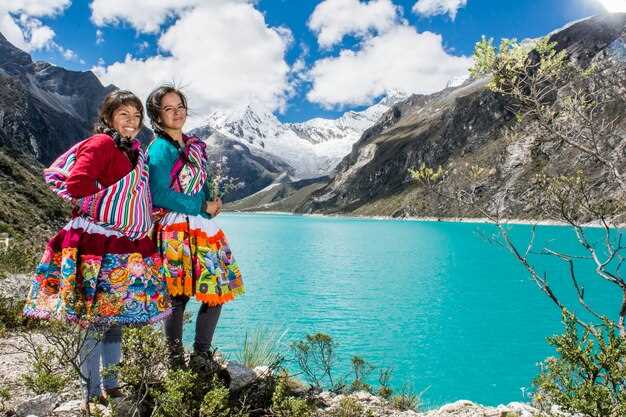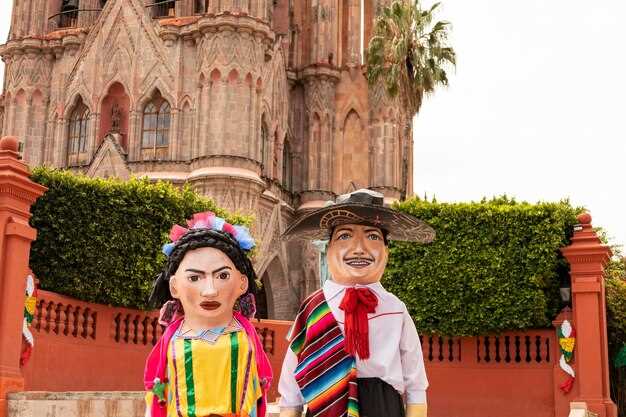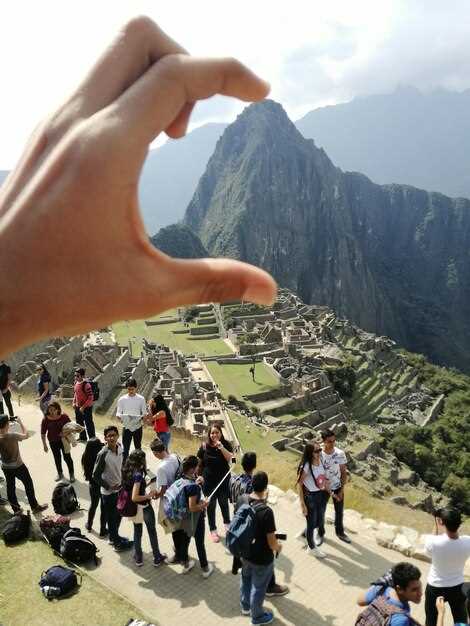Must do: base in cusco for 2 nights to acclimate, then explore neighbouring valleys and a lake circuit near Titicaca. Official language mix includes spanish and quechua; inka heritage remains visible in ruins and museums; a briefing on local customs benefits those want responsible travel; prices vary by region and season; miles of varied terrain invite careful pacing; be aware altitude changes require slow ascent.
On coast, Mancora offers reliable surf; lime-hued sunsets shape sessions. Prices for lessons range 25–60 USD, depending on shop and season; traveling light helps. If you want guidance, a briefing with a local coach boosts safety and pace; those want to map a route can opt for itineraries matching interest in beach towns and cultural sites, supported by internacional operators. Emergency hospital services available in larger towns; travelers should carry health insurance cards.
Must-see experiences cluster around Cusco region and highland ruins; plan a 3–4 day loop from cusco to sacred valley to a citadel, with altitude acclimation included. For similar landscapes, consider rail or walking routes linking towns and lakes; always check local briefing notes for safety.
When traveling, consider international connections from international airports; you can sample lake routes along Titicaca and river valleys, and then cross into neighbouring regions for more Inka-era culture. Prices for domestic flights within country are often lower when booked as part of a multi-stop itinerary; depending on season, some passes offer discounts for groups of two or more travelers.
7-day Peru itinerary: Cusco, Sacred Valley, Machu Picchu, and Lima
Base two nights in Cusco to acclimate; altitude fatigue is common, so afternoon strolls help ease into highland rhythm.
Day 2 centers on Sacred Valley highlights: Pisac market, Moray circular terraces, and Ollantaytambo fortress. In addition, choose a relatively easy hike along a trail with grass on slopes and farmland views, then overnight in Ollantaytambo.
Early-morning rail from Ollantaytambo to Machu Picchu Pueblo; this pace keeps you ahead of crowds, leaving plenty of time for photos and a short acclimation walk. Machu Picchu is a must-see.
If you want Huayna Picchu, tickets are limited and allowed only with permit.
Spend morning exploring citadel via classic circuit, afternoon optional climb or rest, then return by late afternoon to Cusco via train.
Fly to Lima next morning; check into a hotel near Miraflores; afternoon offers numerous cafe options or a stroll along a lively Malecón open to visitors.
In Lima, use metropolitano network for quick hops between Miraflores, Barranco, downtown; cocina internacional showcases fusion flavors, with rice dishes, potato options, pollo a la brasa, and leche-based drinks. october brings milder evenings and plenty of sunshine, also adding to a busy, bustling vibe.
Final morning options include a stroll along Malecón or a quick market stop; depart with memories from a diverse itinerary. In a nearby park, people play a casual soccer game on grass, with tables for snacks nearby.
Best time to visit Peru by season and region
Choose May or September for an incredibly balanced window, where dry skies aid seeing sites while crowds stay reasonable. Lots of weeks in this period let your plans be booked with convenient services at major stops. Arrive by airport or parapuerto and hire a guided operator that covers cusco and nearby sites; there are options to tailor experiences.
Highland routes around cusco favor May–October, with comfortable daytime temps and clear mornings; June through August bring peak crowds. May and September offer milder conditions with fewer groups, ideal for flexible itineraries. Found itineraries include ruins, markets, and jungle. Times of daylight vary by month. Many visitors spread plans across months, balancing treks, coast days, and jungle for a well rounded trip.
Coastal belt around lima, paracas, nazca stays largely dry, with warm sun from December through March and cooler, breezier days June through August. Sunsets over ocean glow lime-orange as light fades, great for photos.
Amazon basin options include iquitos and puerto maldonado. Dry season June–October delivers easier river travel and better wildlife sightings; rainy season November–April brings lush plants and dense foliage plus heavier downpours. Arrival may occur via airport or parapuerto, with chinese-speaking professionals commonly available; many packages can be booked on short notice and include guided jungle walks.
Times to see sunrise over ancient sites matter; plan flexible blocks for altitude acclimatization, which carries significant significance. In addition, addition of private transport or language-specific specialists can earn deeper insights. Cusco altitude may require 1–2 weeks to adjust; adding extra days helps avoid fatigue. Known sites, markets, and plants can fill blocks of days. Prices vary per person.
How to book Machu Picchu tickets, trains, and guided tours
Planning ahead pays off: peak months from June to August push ticket demand; lock passes 3–4 months in advance via official platform or trusted agencies; prices vary by category; passport name required; tickets issued with QR code; bring passport on day; arrive 60 minutes before entry window; buses from Aguas Calientes begin around sunrise; best light appears early morning; last buses fill quickly; consider morning entry for crowd control.
- General entry: cost around 60–70 USD; grants access to ruins for a day; slots split between morning and afternoon; daily visitor cap around 2,500; permit validity spans that day; you get QR code after booking; show passport at entry; arrive 60 minutes before slot; bus ride from Aguas Calientes to citadel gate begins pre-dawn; sunrise yields best photography; if you miss morning slot, afternoon still nice, but crowds rise towards midday.
- Huayna Picchu permit: adds around 20–25 USD; only 400 slots daily; requires climbing 1.5–2 hours; books well in advance; isnt always available for last-minute requests; advisable to plan 2–4 weeks ahead; for some travellers, this add-on may fit a fuller schedule.
- Machu Picchu Mountain permit: add-on around 10–30 USD; limited daily slots; allow extra time for ascent; great vistas; book early to avoid sold-out.
- Trains: two main operators–PeruRail and Inca Rail; routes Ollantaytambo or Poroy to Aguas Calientes; travel times 1.5–2 hours on standard services; Vistadome offers wide windows; Premium and First Class provide larger seating and extras; prices vary by class: Economy around 60–90 USD one-way; Vistadome roughly 150–250 USD; private options higher; booking ahead advised; some packages combine train with entry for convenience.
- Guided tours: private guides or small-group options; durations typically 2–8 hours; half-day costs around 100–300 USD; full-day 180–450 USD; upscale packages may include hotel pickup, private vehicle, meals, and priority entry; Isidro is a well-known local guide who often adds archaeology context; cooking classes or market visits can be bundled as add-ons; tours provided by licensed operators include insurance and multilingual commentary; hotline support available for urgent changes.
Booking tips: verify passport name exactly matches documentation; if something isnt clear, contact contractor via hotline before purchase; always request a sample itinerary and cancellation terms; consider purchasing a flexible option to adapt to weather or strikes; travellers can find affordable choices by joining group tours, yet human touch in private plans delivers a richer experience; for upscale planning, ask operators about private transfers, early entry, and after-visit dining options; keep a grocery list handy for markets along route, and look for virgin jungle pockets and sculpture stops in extended itineraries; cost varies widely based on inclusions, speed, and language of guide; they provide diverse experiences through well-designed phrases and clear explanations.
Extras for planning: countrys tourism networks often show options linking cities and islands; until you finish with jungle trails and virgin landscapes, consider a mix including wide-range lodging and local markets; bowling nights or other activities can be added in some packages for evenings; cheaper choices exist via group itineraries, while human-centered, upscale packages raise comfort level; travellers should know entry rules, timing, and baggage limits; Isidro or other licensed guides can tailor routes to photography, archaeology, or nature interests; capture memorable moments with recommended stops for panoramic views and sculpture details; hotline numbers provided by operators stay active during trips to help with changes; you’ll gain confidence knowing each step is covered by official arrangements and reputable agencies.
Packing list for Peru and tips for altitude acclimatization
Arrive to cusco 72 hours before starting high-altitude trails. Hotel located near calle central plaza helps pace. Learn a few Quechua phrases, hire a local guide if you want extra safety, and ask neighbours for support. Minutes spent resting on arrival speed acclimatization progress.
Keep acclimatization simple: drink lime electrolyte drinks, hydrate daily, avoid rush during first days. If symptoms appear, seek local support; pace yourself with low-intensity activities such as visits to church or strolls near lagoons and lake sites.
| Item | Quantity | Notes |
|---|---|---|
| Base layer thermal tops | 2 | Moisture-wicking; wear under mid layer |
| Mid-layer fleece | 1-2 | Traps heat during chilly nights |
| Insulated jacket | 1 | Warm option for elevations above 3500 m |
| Waterproof shell | 1 | Windproof; pack compact |
| Hiking pants | 2 | Quick-dry; zip-off legs optional |
| Socks | 5 pairs | Wool or synthetic; prevent blisters |
| Sturdy hiking boots | 1 pair | Waterproof; well-broken-in |
| Daypack 20-30 L | 1 | Hydration sleeve; side pockets |
| Headlamp + extra batteries | 1 + extras | Crucial for early starts |
| Water bottles / hydration bladder | 2 | Carry at least 1.5 L; avoid single-use plastic |
| Electrolyte sachets (lime) | 10-12 | Maintain minerals; lime flavor preferred |
| First aid kit | 1 | Bandages, antiseptic, altitude meds if prescribed |
| Personal medicines | As needed | Keep in carry-on |
| Power bank (matmax) | 1 | Charge devices between spots |
| Power adapter | 1 | South American plugs |
| faro headlamp | 1 | Night walks or early starts |
| Insect repellent | 1 | Useful on jungle excursions |
| Sunscreen SPF 50+ | 1 | High altitude UV protection |
| Toiletries | Various | Biodegradable items preferred |
| Documents & cash | Copies, cards | Digital + paper backups |
| Local map or offline app | 1 | Useful for citys and sites |
Booked tours fill quickly; operate from cusco and neighbouring towns. Hotels offering jungle sightings near lagoons; tours from neighbouring towns provide river trips and cultural shows. If you want to learn about local cuisine or drinks, join a small group with travelers and ask for permission to photograph. Arrive early, earn goodwill, and keep experiences respectful of locals and ecosystems.
Budget breakdown: costs for top attractions, meals, and transport
Begin with a concrete plan: youve daily spend around 75–110 USD on meals and local transport, plus 45–130 USD for entry to iconic ancient sites and burial grounds. Staying in Isidro saves money while preserving safety; times of arrival affect weather and crowds. Styles vary from casual street stalls to french patisseries, with options to see something special. If you go independently, you gain flexibility to map routes and seeing more at own pace.
Attractions and entry costs
Iconic ruins entry 25–60 USD; guided walks 25–60; combined passes 60–120; picchus area pass 70–90; Several sites highlight ancient history; always carry passport for discounts; safety rules apply; times vary by march season.
Meals and transportation plan

Meals: street bites 2–4 USD; casual meals 5–12; sit-down meals 12–25; chain eateries and grass-side cafés offer choices; french patisseries present style options; prices vary with weather and location; walking between markets saves money.
Transport options: local buses 0.5–2 USD; taxis 2–8 USD per ride; intercity trains 20–80; flights within region 120–350; tandem bikes 8–12 USD per hour. Complete daily spend around 25–40 for meals, 5–15 for transportation, plus 25–60 for iconic sites. If journey budget is tight, avoid pricey tours; traveler preference matters, going solo or with companions.
Safety, health, and traveler tips for Peru (scams, vaccines, and health precautions)
Always hire licensed taxis or rides via trusted apps; keep belongings close and in sight, especially nights; use hostels with lockers for valuables; carry a slim money belt and mind your belongings at all times; avoid flashing gear in narrow streets and rely on private transport after dark.
Watch for common tricks near museums, markets, and islands: overcharged fares, distraction theft, and strangers offering unsolicited help. If approached by someone claiming you have a problem with documents, insist on going to a formal station or contact your travel contact instead of paying on the street. Buy tickets at official box offices, and opt for reputable tour operators for island visits to avoid inflated prices and tight timelines.
Vaccination and health prep: HepA and HepB vaccines are advised for most travelers, typhoid coverage is prudent for street food, and rabies may be considered for longer stays or jungle work. Ensure routine vaccines are up to date; yellow fever vaccination is generally only needed when arriving from certain regions or passing through risk zones. Rainforest trips carry malaria risk–follow clinician guidance on prophylaxis, use insect repellent, and wear long sleeves at dawn and dusk. Drink bottled water, avoid ice, and practice thorough hand hygiene before meals; sugar drinks with azúcar are common, so choose boiled beverages if stomach sensitivity is a concern.
Altitude and climate considerations: acclimate gradually in highland towns, pace your ascent, and stay hydrated; if dizziness or headache appears, rest and descend if symptoms worsen. Pack warmer layers for nights and mornings, even during the march shoulder season, and choose concrete sidewalks and well-lit routes when planning city visits to reduce strain.
Street safety and daily routines: darkness can mask risks, so stay in well-populated routes and walk with company when possible; in districts like barranco or architectural zones, follow official paths and avoid shortcuts through dim alleys. Keep valuables secure and avoid displaying money or electronics in crowded areas; private guided routes offer clear itineraries and better pace control.
Rainforest and coastal adventures: hire private, licensed guides for jungle treks and never travel alone in remote areas; confirm cruz markers and park certifications with your operator; for island excursions (islands) book through established agencies and verify inclusions to avoid last-minute offers that rush decisions. Bring a compact first-aid kit, a durable reef-safe sunscreen, and a waterproof bag for belongings during boat transfers and coastal visits.
Emergency preparedness: carry copies of passport and hotel info, photo-fix backups, and a list of local emergency numbers; learn the location of the nearest hospital or clinic and save the number of your embassy or consulate. Always share your morning plan with someone you trust, especially when visiting museums or outdoor collections, and avoid non-official payment demands or unsolicited offers during travel.
Hidden gems by region: coastal Lima, Andean towns, and Amazon lodges
Bookings with a local expert manage transitions along coastal Lima; there, surfers ride sunny beach swells and bustling crowds stay relatively distant. There, sample a short pisco sour, meet cats by miraflores, and communicate with vendors at a parapuerto market. Impressive viewpoints reveal significance of coastline beyond crowded hotspots. In addition, quiet coves provide space for reflection, kennedy vibes echoing through small plazas. Evenings may include casino visits near a lively resort strip.
Andean towns

Inland highland towns offer crisp air, sunlit plazas, and compact trekking options. Guided routes vary in difficulty; shorter circuits let you acclimate quickly. Tandem bikes add playful options for couples, while cruz symbols mark hillside paths. Altitude may prompt clínica attention; stay aware and hydrated. kennedy vibes linger in plazas, adding a sense of history to every stroll. An addition of local markets, music, and cuisine makes afternoons memorable. cupido moods drift through small chapels during festival days.
Amazon lodges
Riverine lodges lie beyond dense canopy, reachable by canoe or light air transfer. Guided itineraries pair day trips with nocturnal safaris, offering impressive wildlife sightings and canopy walks. Pack matmax sleeping mat for comfort; many lodges provide basic bedding and mosquito nets. Space to unplug stands out, bookings must be made early, since slots vary with season. Parapuerto access eases arrivals; communicate with lodge teams to plan multi-night stays. clínica support is limited in some camps, yet aware guests can request assistance. Tourists were delighted by intimate encounters with wildlife and tranquil location. For amazon adventures, bookings should be placed early.

 Peru Travel Guide 2025 – Discover the Best of Peru – Top Attractions & Tips">
Peru Travel Guide 2025 – Discover the Best of Peru – Top Attractions & Tips">
